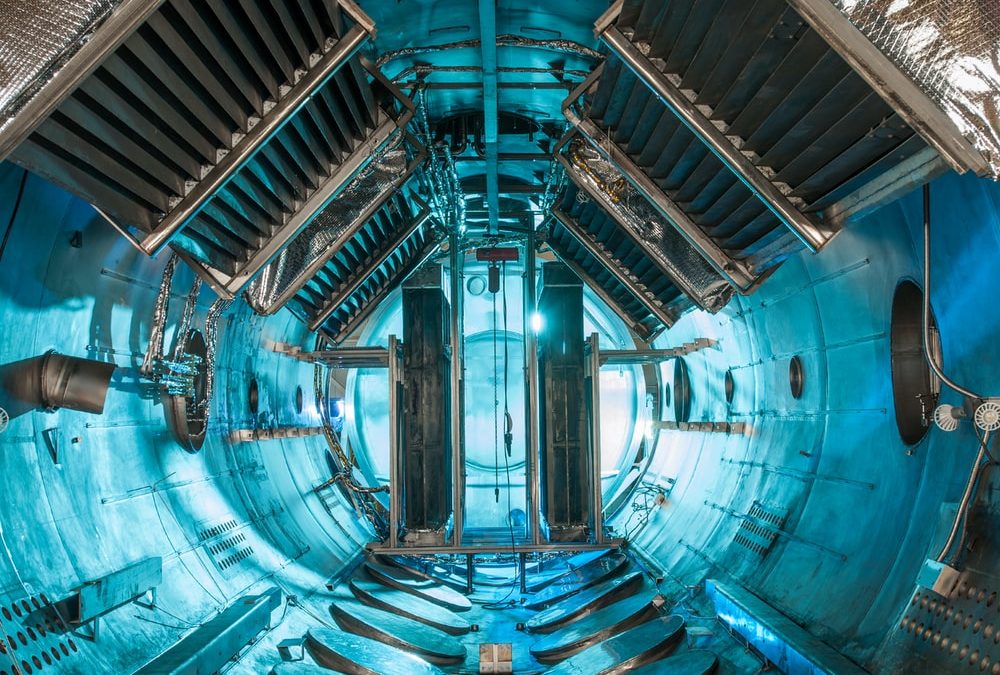Aerospace cleanrooms require a high level of control. They can range from an ISO 14644-1 Class 5-7, which have vastly different requirements. At a minimum ISO Class 7, the cleanroom will require about 60-90 air changes per hour and need to filter out a range of particle sizes, including all but 352,000 of microns 0.5 or larger per cubic meter. The cleanroom’s filtration system, airflow pattern, and ceiling fan coverage all work together to reach these stringent cleanroom classifications. In addition to these components, there’s another system that is integral to maintaining control and supporting other factors of cleanroom design: the cleanroom HVAC system.
The aerospace cleanroom HVAC system effectively controls temperature, humidity, and ventilation within the space. It helps make sure all processes run smoothly and helps keep the cleanroom clean and efficient. Let’s explore the basic cleanroom HVAC requirements for environmental control of temperature, humidity, and ventilation, and how these three factors can play an important role in aerospace cleanroom operations.
Aerospace Cleanroom HVAC Temperature
A cleanroom HVAC system is crucial for controlling temperature within your aerospace cleanroom. It’s important to manage temperature, not only to keep employees comfortable but to maintain a stable environment. Some processes within aerospace cleanrooms generate significant heat and need to be balanced with proper cooling to prevent both staff and equipment from overheating.
Temperature fluctuations could affect cleanroom operations if some equipment, parts, or materials are temperature sensitive. Some sensors or electronics will not function effectively in an unstable environment. Also, expanding and contracting as a response to temperature changes could affect manufacturing equipment or products and lead to failure.
The cleanroom HVAC system can fine-tune temperature to optimal levels and make adjustments as needed depending on operating needs and project requirements. NASA recommends an optimal temperature of 67-77°F in aerospace cleanrooms ISO Class 5-8. For less restricted aerospace cleanroom applications, higher temperatures up to 80°F are allowed.
Aerospace Cleanroom HVAC Humidity
Humidity can affect aerospace cleanroom operations from minor to major ways, from changes to paint drying time or consistency to the disruption of fine electrical parts or sensors. At a minimum, humidity in aerospace cleanrooms should be controlled to prevent condensation on surfaces, which could not only affect the performance of hardware within the cleanroom but also could attract surface particulates and contaminate products.
The HVAC system is responsible for regulating appropriate humidity levels within the controlled cleanroom environment. Humidity in an aerospace cleanroom should be 30% at minimum, and not exceeding a maximum of 50%.
Aerospace Cleanroom HVAC Ventilation
Proper ventilation is key to meeting stringent air change or air velocity requirements in an aerospace cleanroom. Optimal and consistent ventilation is essential for supplying the cleanroom with clean air, and is the foundation for all other systems to function effectively. Proper ventilation powers the cleanroom airflow pattern, limits airborne particles with the support of filters, and prevents surface particles from settling and contaminating the cleanroom environment.
Airflow also creates a pressure differential. Positive pressure in aerospace cleanrooms helps prevent contaminants from entering the controlled environment, especially through small spaces in the structure around doorways, between panels, or other weak points. To achieve positive pressure, the cleanroom HVAC system will push more air into the cleanroom than is allowed out. Only a slight degree of pressurization is needed to achieve positive results.
Choosing the Right Cleanroom HVAC
Depending on your application, your aerospace cleanroom will have to meet a classification as well as specific industry requirements. These also stipulate control over environmental factors that could interfere with cleanroom operations. In addition to proper filtration and ceiling coverage of FFUs, your cleanroom HVAC system is important to maintaining a controlled environment. Establishing complete control over environmental factors like temperature, humidity, and ventilation, your cleanroom’s HVAC is a vital part to achieving project success.
Depending on your application’s unique needs and cleanroom classification, a more powerful HVAC system might be required. Your capabilities within your cleanroom are determined by your collective systems’ ability to manage the environment, effectively change the air, and consistently remove particles to keep the space clean and contaminant-free.
Is your existing cleanroom HVAC system powerful and efficient enough to meet your needs? Whether you’re shopping for a new HVAC or looking to update your existing one, Angstrom Technology can help! We understand aerospace cleanroom HVAC requirements and can help you get the most out of your system for full temperature, humidity, and filtration control. To have our experts assess your HVAC or go over your requirements for a new system, give us a call or reach out online.


